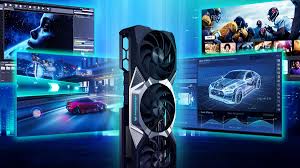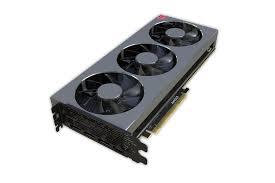 The graphics card market has reached a breaking point, with increasing numbers of gamers actively resisting the latest GPU releases. What was once an enthusiastic community eagerly awaiting each new generation now greets announcements with skepticism and even hostility. This 2,500-word investigation reveals the complex factors behind this dramatic shift in consumer sentiment and what it means for the future of PC gaming.
The graphics card market has reached a breaking point, with increasing numbers of gamers actively resisting the latest GPU releases. What was once an enthusiastic community eagerly awaiting each new generation now greets announcements with skepticism and even hostility. This 2,500-word investigation reveals the complex factors behind this dramatic shift in consumer sentiment and what it means for the future of PC gaming.
A. The Golden Age of GPU Value (2010-2016)
-
Reasonable Pricing Landscape
-
Flagship cards at $500-$700 price points
-
Clear generational performance jumps (40-60%)
-
Affordable mid-range options ($200-$300)
-
-
Notable Consumer-Friendly Releases
-
GTX 970’s price/performance milestone
-
AMD’s R9 290X disrupting the market
-
GPU wars driving innovation
-
-
Healthy Market Dynamics
-
Two-way competition between Nvidia and AMD
-
Frequent price adjustments
-
No artificial segmentation of features
-
B. The Eight Factors Fueling Modern GPU Resentment
1. Explosive Price Inflation
-
Current Flagship Pricing:
-
RTX 4090: $1,599 (159% increase over 1080 Ti)
-
RX 7900 XTX: $999 (128% increase over Fury X)
-
-
“Mainstream” Card Redefinition:
-
$400 now considered mid-range
-
Performance-per-dollar declining
-
2. Artificial Feature Segmentation
-
DLSS 3 frame generation locked to RTX 40-series
-
AMD’s SAM technology limitations
-
Driver-level performance caps
3. Shrinking Generational Leaps
-
Performance improvements dropping to 20-30%
-
Stagnant rasterization gains
-
Focus on power efficiency over raw power
4. The Mining Hangover Effect
-
Crypto boom normalizing inflated prices
-
Flooded secondhand market distrust
-
Manufacturers refusing to reset expectations
5. Bloatware & Mandatory Services
-
Geforce Experience requirements
-
Ad-supported control panels
-
Telemetry data collection
6. Physical Size & Power Insanity
-
3.5-slot, 1600g behemoths
-
450W+ power requirements
-
Melting power connectors
7. Planned Obsolescence Tactics
-
Deliberate VRAM limitations
-
Premature API support drops
-
Artificial driver degradation
8. Broken Promises of New Tech
-
Ray tracing performance still lacking
-
DLSS/FSR as crutches for weak hardware
-
Unfulfilled AI acceleration promises
C. Market Data Revealing the Backlash
| Metric | 2016 | 2023 |
|---|---|---|
| Average GPU Price | $280 | $580 |
| Steam Survey Top Card | GTX 1060 (6GB) | GTX 1650 |
| Upgrade Cycle | 2.1 years | 3.8 years |
| GPU Return Rates | 2.3% | 6.7% |

D. How Gamers Are Fighting Back
-
The Used Market Renaissance
-
RTX 3080s at half original MSRP
-
Mining card rehabilitation guides
-
Community verification systems
-
-
Alternative Platforms Gaining Ground
-
Steam Deck/Linux adoption
-
Cloud gaming subscriptions
-
Console value proposition
-
-
Vocal Community Resistance
-
Review bombing new releases
-
#NotMyGPU social media campaigns
-
Organized boycott movements
-
-
DIY Solutions & Mods
-
Power limit undervolting
-
Open-source drivers
-
VRAM modding communities
-
E. Industry Response (And Why It’s Failing)
-
Tone-Deaf Marketing
-
“Moore’s Law is dead” justifications
-
“Premium experiences” rhetoric
-
Blaming inflation while posting record profits
-
-
Half-Measure “Solutions”
-
Overpriced last-gen rebrands
-
Gimped bus widths and memory
-
Fake discounts and bundles
-
-
Doubling Down on Bad Strategies
-
More aggressive segmentation
-
Pushing unnecessary features
-
Ignoring mainstream market
-
F. The Path Forward: Possible Scenarios
-
Market Correction (Best Case)
-
AMD/Nvidia price wars return
-
Intel becoming competitive third player
-
Consumer advocacy forcing changes
-
-
Continued Stagnation (Likely Case)
-
$1,000 “mainstream” cards by 2025
-
More software-locked features
-
Longer upgrade cycles
-
-
Industry Disruption (Wild Card)
-
ARM-based gaming GPUs
-
Open-source hardware projects
-
Major cloud gaming breakthrough
-
G. Smart Buying Guide for Disillusioned Gamers
-
Current Best Values
-
Used: RTX 3080 ($400-500)
-
New: RX 6700 XT ($330)
-
Budget: Intel Arc A750 ($200)
-
-
What to Avoid
-
8GB cards in 2023
-
Founders Edition models
-
Anything over MSRP
-
-
Alternative Approaches
-
1080p gaming resurgence
-
Frame generation skepticism
-
Emphasizing settings optimization
-

Conclusion
The growing gamer resentment toward modern GPUs represents a fundamental breakdown in the traditional value proposition of PC hardware. What began as frustration over crypto shortages has evolved into widespread rejection of an entire business model. While the industry continues pushing higher margins and artificial differentiation, consumers are increasingly voting with their wallets – either by holding onto old hardware longer or leaving traditional PC gaming altogether. The coming years will determine whether GPU manufacturers course-correct or accelerate the platform’s decline into niche status.














